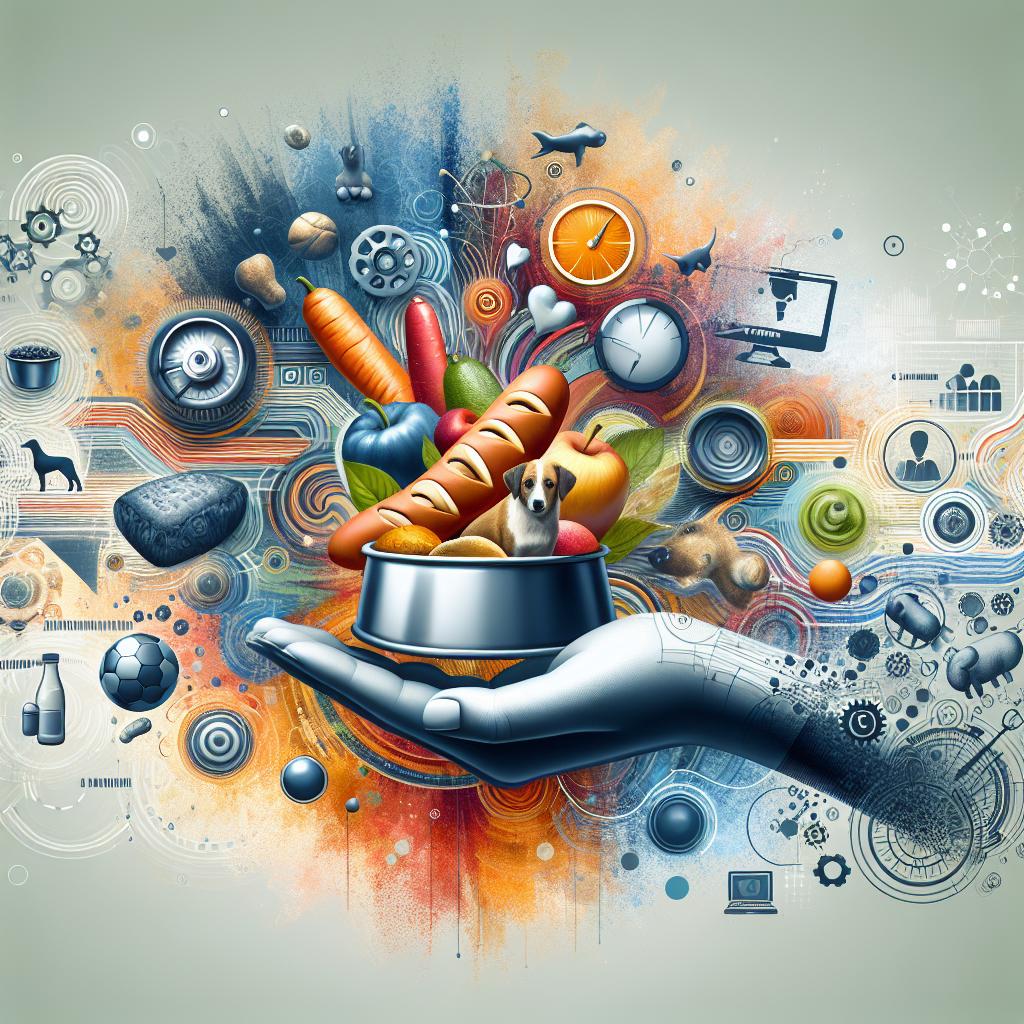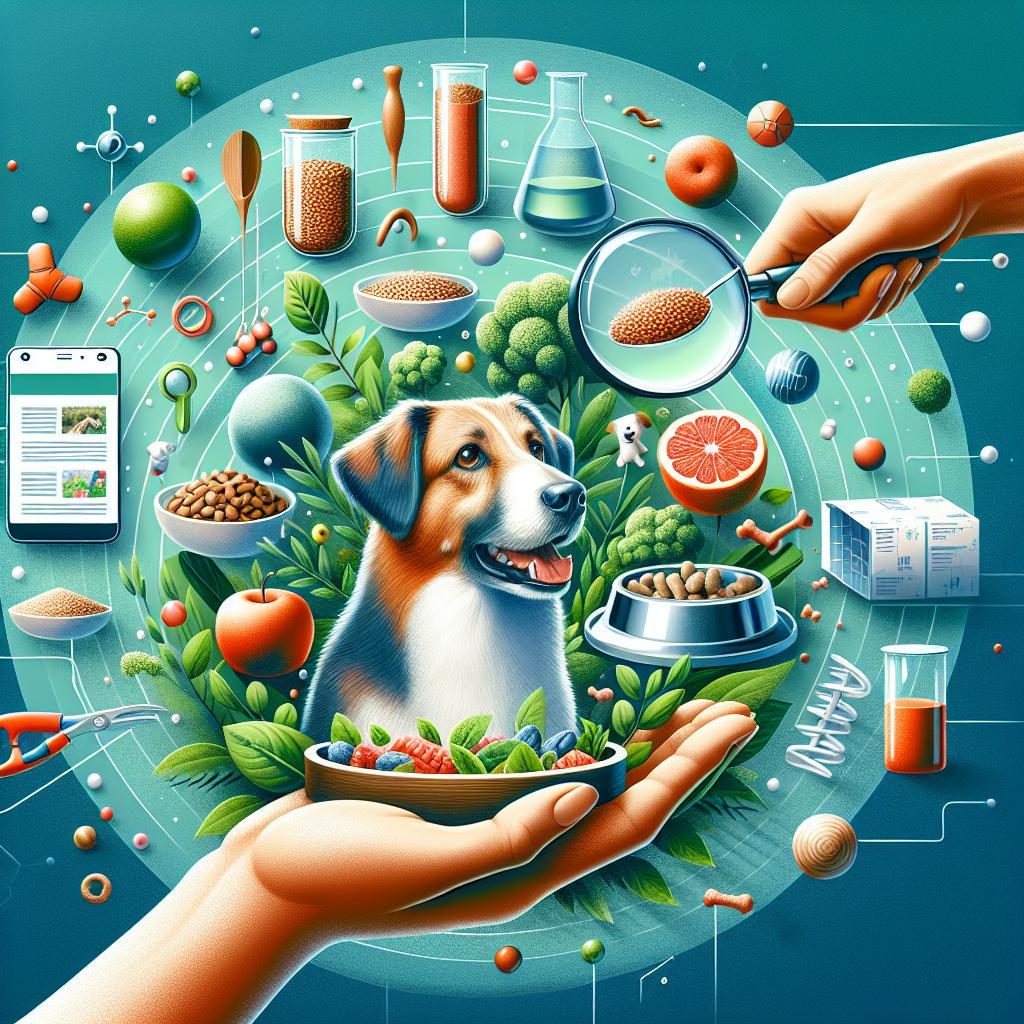In a world where pet wellness trends ebb and flow with each season, the raw food diet for dogs has emerged as a captivating choice for many pet owners. Just as humans are increasingly drawn to fresh, whole foods brimming with nutrients, dog lovers are beginning to recognize the potential benefits of a similar philosophy for their furry companions. Imagine a diet that mirrors the ancestral eating patterns of canines, rich in unprocessed ingredients and vital nutrients. As you embark on this exploration of the raw food diet for dogs, we will delve into its myriad advantages, from improved digestion to enhanced vitality, while also considering the practicalities of implementing such a nutritional shift. Whether you are a curious newcomer or a seasoned pet advocate, this journey into the world of raw feeding promises to open your eyes to a holistic approach in nurturing our four-legged friends.
Exploring Nutritional Superiority and Digestive Health
The raw food diet for dogs emphasizes the consumption of whole, unprocessed foods that closely resemble a dog’s natural diet in the wild. This dietary approach is often lauded for its nutritional superiority, as it provides a variety of essential nutrients, including protein, vitamins, and minerals, in their most natural state. Dogs can benefit from a range of raw foods such as:
- Raw meats – High in protein and amino acids
- Organs – A rich source of vitamins A, B, and other critical nutrients
- Raw bones - Provide calcium and phosphorous
- Vegetables – Offer fiber, antioxidants, and additional vitamins
Moreover, a raw food diet is known to promote digestive health in dogs. The inclusion of natural fibers from whole vegetables and fruits supports a healthy gut, facilitating smooth digestion and regular bowel movements. When transitioning to a raw diet, it’s crucial to consider the proper balance of nutrients to avoid deficiencies. Below is a simple reference table comparing raw food components:
| Food Source | Benefit |
|---|---|
| Raw Chicken | High Protein & Omega Fatty Acids |
| Beef Liver | Rich in Vitamin A & Iron |
| Carrots | High in Fiber & Vitamin K |
| Fish | Source of Omega-3 Fatty Acids |

Enhancing Energy Levels and Promoting Ideal Weight
The incorporation of raw food into a dog’s diet can significantly elevate their overall energy levels. Raw foods are packed with essential nutrients that support optimal metabolic processes, allowing your pup to thrive with vigor and vitality. A diet rich in fresh meats, vegetables, and fruits can lead to improved digestion and a more efficient energy utilization, resulting in a lively and active dog. Factors contributing to this boost in energy include:
- High Protein Content: Raw diets generally include lean meats and fish, providing the necessary protein to fuel muscle activity.
- Natural Enzymes: Raw foods are unprocessed, retaining natural enzymes that aid digestion and help dogs absorb nutrients effectively.
- Quality of Ingredients: Choosing high-quality, fresh ingredients can further enhance energy by minimizing fillers and additives.
In addition to increased energy, a raw food diet can also promote ideal body weight. When dogs consume a balanced mix of raw nutritional components, they are less likely to overeat due to feeling satisfied and energized. This helps in maintaining a healthy weight by allowing dogs to consume fewer calories while still getting the necessary nutrients. Here’s how a raw diet can assist in weight management:
- Controlled Portions: Raw food diets often consist of whole cuts of meat and vegetables that can be portioned more accurately.
- High Digestibility: Dogs can process raw foods better, leading to less waste and a more efficient caloric intake.
- Balanced Nutrients: A raw diet can be tailored to include the right balance of fats, proteins, and carbohydrates, supporting healthy metabolism.
Boosting Immune Function and Reducing Allergies
Feeding dogs a raw food diet can significantly enhance their immune system function. When dogs consume fresh, unprocessed foods, they receive natural nutrients absent in many commercial kibbles. This holistic approach allows for better absorption of vitamins and minerals, primarily due to the lack of fillers and preservatives. The inclusion of raw proteins, vegetables, and healthy fats can boost the production of white blood cells, essential for fighting off infections. Just consider incorporating some key components into their diet:
- Lean meats: Rich in zinc and iron, which support immune health.
- Fresh fruits and vegetables: Loaded with antioxidants that combat free radicals.
- Omega fatty acids: Found in some fish and oils, promoting a healthy inflammatory response.
Moreover, a raw food diet can be beneficial for dogs prone to allergies. Many commercial dog foods use common allergens like grains and artificial additives that can trigger adverse reactions. By offering a diet based primarily on raw, whole foods, you can significantly reduce exposure to these irritants. This approach can lead to less itchy skin, improved coat quality, and overall better health. Here are some ingredients to focus on for allergy-prone dogs:
| Ingredient | Benefit |
|---|---|
| Sweet Potatoes | High in fiber and essential vitamins without common allergens. |
| Quinoa | A gluten-free grain alternative that is high in protein. |
| Blueberries | Rich in antioxidants and low in complexity, suitable for sensitive systems. |

Navigating the Transition: Tips for a Successful Raw Food Journey
Transitioning your canine companion to a raw food diet can be an exciting adventure, but it requires careful planning and consideration. Start by researching the dietary needs of your specific dog breed, as different breeds may have varied nutritional requirements. Begin the process gradually by introducing raw meals slowly to avoid digestive upset. You might consider a transition schedule, where you mix a small percentage of raw food with their current diet before progressively increasing the raw intake. Monitor your dog’s reaction and adjust accordingly to ensure a comfortable switch.
It’s crucial to maintain a balanced diet rich in vitamins and minerals throughout this transition. Incorporate a variety of animal proteins, such as chicken, beef, and fish, along with fresh fruits and vegetables. Keep in mind the importance of bone content for calcium intake. Use the table below to help you understand a balanced meal plan:
| Protein Source | Fruits & Vegetables | Supplement |
|---|---|---|
| Chicken Thighs | Carrots | Fish Oil |
| Beef Liver | Blueberries | Vitamin E |
| Salmon | Sweet Potatoes | Probiotics |
In addition to using diverse proteins and veggies, don’t forget to consult with your veterinarian during this transition. They can provide tailored advice and recommend supplements to ensure that your dog continues to thrive on its new diet. Staying informed and connected with a community of raw food advocates can also be beneficial; sharing tips and experiences can enhance your raw feeding journey!
Q&A
Q&A: The Benefits of Raw Food Diets for Dogs
Q1: What exactly is a raw food diet for dogs?
A1: A raw food diet for dogs, often referred to as “BARF” (Biologically Appropriate Raw Food or Bones and Raw Food), consists of uncooked meat, bones, fruits, vegetables, and dairy. This approach aims to mimic the natural diet of wild canines, providing dogs with a balanced intake of nutrients without the additives often found in commercial pet food.
Q2: What are some key benefits of feeding dogs a raw food diet?
A2: Proponents of raw diets claim various benefits, including improved dental health due to chewing raw bones, a shinier coat thanks to high-quality fats, increased energy levels, better digestion due to natural enzymes, and reduced allergies and skin conditions. Additionally, many owners report that their dogs are more enthusiastic about mealtime when offered fresh, whole foods.
Q3: Can a raw food diet help with specific health issues in dogs?
A3: Some dog owners opt for a raw diet to address specific health concerns such as obesity, allergies, or digestive issues. The high protein and low carbohydrate content can aid weight management, while a variety of fresh ingredients can help alleviate food sensitivities. However, it’s important to consult a veterinarian before making drastic changes, as each dog’s needs may vary.
Q4: Are there any risks involved with raw food diets?
A4: Yes, there are potential risks. Raw diets can put dogs at risk for foodborne illnesses, like Salmonella or E. coli, which can affect both pets and their owners. Additionally, if not properly balanced, dogs may miss critical nutrients, leading to deficiencies. It’s vital to research and prepare balanced meals or consult a veterinary nutritionist when switching to a raw diet.
Q5: How can a dog owner transition their pet to a raw food diet safely?
A5: Transitioning to a raw food diet should be done gradually. Start by incorporating small amounts of raw food into your dog’s existing diet, increasing the portion over several days or weeks. Monitor your dog’s health and behavior during the transition. Keeping a journal of any changes can help you consult with your vet if needed.
Q6: What should a balanced raw food diet include?
A6: A well-rounded raw food diet typically consists of a mix of muscle meat, raw bones, organ meat, fruits, and vegetables. The balance should be approximately 70% meat and bones, 20% organ meats, and 10% fruits and vegetables. It’s essential to rotate the protein sources to provide a range of nutrients.
Q7: Can all dogs thrive on a raw food diet?
A7: Not all dogs will thrive on a raw food diet. Factors such as age, health conditions, and individual dietary needs can impact whether this feeding style is appropriate. Young puppies, pregnant or nursing dogs, and those with certain underlying health issues may need a more specialized diet. Always consult with a veterinarian before starting your dog on a raw food regimen.
Q8: How does the cost of raw food diets compare to commercial dog foods?
A8: The cost of a raw food diet can vary widely depending on the source of the ingredients and the size of your dog. Some owners find raw feeding to be more expensive than traditional kibble, especially if they prioritize high-quality, organic, or ethically sourced meats. However, some find that investing in a raw diet leads to fewer vet bills due to improved overall health.
Q9: Are there resources available for dog owners interested in raw feeding?
A9: Yes, there are countless resources available for those interested in raw feeding, including books, online communities, and veterinary nutritionists specializing in raw diets. Many pet supply stores and online retailers also offer pre-prepared raw food options to simplify the process for dog owners.
Q10: is a raw food diet the right choice for my dog?
A10: Ultimately, the decision to switch to a raw food diet should be made after careful consideration and research. It’s essential to look at your dog’s specific health needs, lifestyle, and your capability to prepare balanced meals. Consulting with a veterinarian can help ensure that you’re making the best choice for your furry friend’s health and well-being.
Key Takeaways
embracing a raw food diet for your canine companion can unlock a treasure trove of health benefits, promoting vitality, enhancing digestion, and encouraging a shiny coat. As with any significant dietary change, it’s essential to consult with your veterinarian to tailor a plan that meets your dog’s individual needs. Remember, a well-balanced approach—combining insights from professionals with your understanding of your pet’s preferences—can lead to a rewarding journey towards optimal health. Whether you’re a seasoned raw feeder or just beginning to explore this vibrant culinary avenue, the joy of sharing nourishing meals with your furry friend can be one of the most gratifying experiences. So, as you consider this path, envision the wagging tails, playful barks, and the bond that deepens over each healthful bite. Your dog’s wellbeing may just flourish in the process, making every meal a celebration of vitality and love. Happy feeding!

